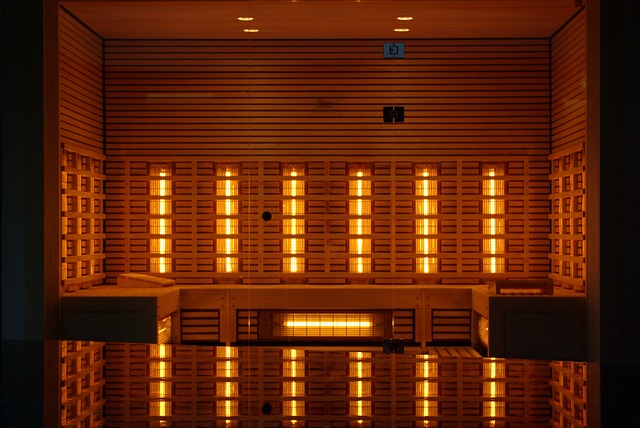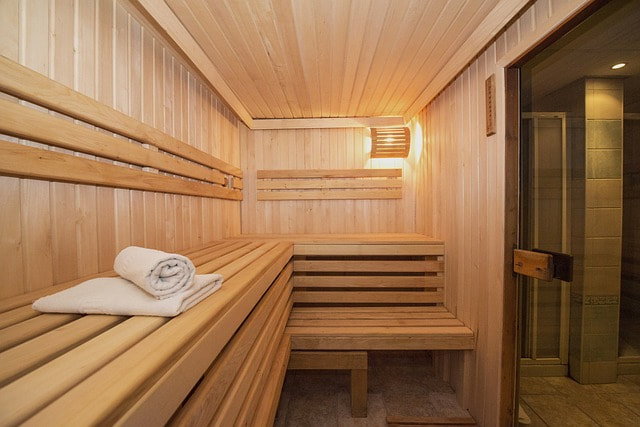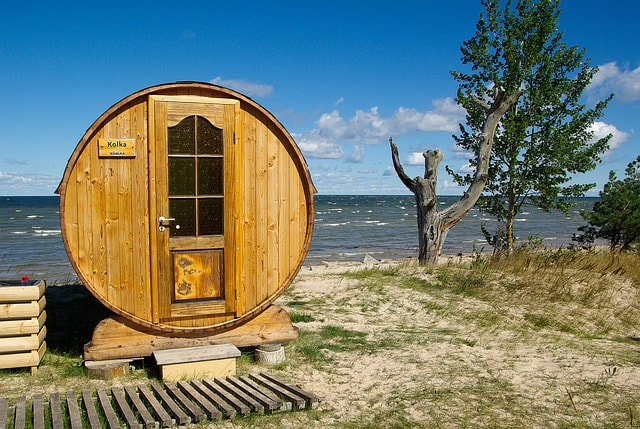|
For most residential and commercial properties, sauna installations are the order of the day, thanks to a new wave of demand. In fact, the post-covid demand for saunas, among other wellness spaces, spans all age groups. After all, the realization of optimal health and the proven benefits of sauna baths to that end seems to have caught everybody's imagination. However, the question of choosing between a dry sauna vs wet sauna has still kept sauna enthusiasts puzzled. So much so that you can find online forums filled with queries and suggestions as to which sauna one should install. And for someone looking to install a sauna bath, this can sometimes create more confusion than clarity. Nevertheless, we understand that choosing between a dry vs wet sauna need not be complicated. And that's exactly why we've created this detailed comparison between dry and wet saunas to help you pick your ideal sauna solution. So read on as we answer all your queries about dry and wet saunas. Dry sauna vs wet sauna: understanding the differencesInstalling a sauna is nothing like having a sauna bath at a spa or gym since the latter calls for a huge upfront investment. More so, as people save up for months and years just to install a steam sauna on their property. Meaning it's essential to understand the differences between both saunas as well as their specifications. So let's start with it. What is a dry sauna? A dry sauna is the oldest and the most common type of sauna, dating back to ancient Finland. And that's one of the reasons why it is also called the Finnish sauna. Simply put, this is your typical gym or spa sauna with a small to medium wooden enclosure heated anywhere between 165 and 200 degrees Fahrenheit. Also, as the name suggests, a sauna like this is hot but dry at the same time, meaning humidity levels in the sauna will be close to zero. And to that end, heating in a dry sauna is created by a combination of electric heaters and warm rocks. Also, you can find dry saunas using wood and gas heaters to create the same temperature conditions. Fun fact: A Healthline article that compared various medical studies found that dry sauna bathing carries a ton of health benefits apart from regular relaxation and detox effects. And that includes a healthier heart, relief from asthma, and a significantly reduced risk of dementia, to name a few. How do dry saunas work? The dry saunas, as we just saw, create a warm ambiance but with the least moisture. And to do so, there are dry sauna components that work in sync. Here are the various dry sauna components and their working: #1. Sauna heaters create an ambient temperature Dry saunas use sauna heaters for warming up the enclosure, which depending on the type of sauna, can be anywhere from electric to wood burning to gas heaters. So let's have a look up close at the various dry sauna heaters. #A. Wood heaters Did you know that the traditional saunas have all but wood heaters? Herein, you can find a heater with a wood-burning section and an attached chimney which makes it look like your typical fireplace. And the wood heater, when equipped with sauna rocks, raises the temperature in the sauna room, creating the desired temperature. Now, wood heaters have been the go-to dry sauna heaters for more than a thousand years, until 1938, when the first electric sauna was introduced to the market. In fact, a lot of sauna enthusiasts still install a wood-burning sauna heater to create the feel of a traditional sauna. #B. Eclectic heaters If saunas have evolved and become a popular wellness solution, you should thank eclectic heaters. Electric heaters use a heating element that heats the sauna rocks, which in turn warm up the entire sauna room. And this is by far the most efficient way of sauna bathing since there's no need to fire up wood planks. Not to mention, electric sauna heaters are compact and energy-efficient, the icing on the cake. #C. Gas heaters Apart from wood and electric heaters, there are gas-powered sauna heaters as well. Although not as efficient as their eclectic counterparts, these heaters are quite powerful. And that makes them apt for heating large sauna enclosures. So the next time you step into a large Nordic sauna at a day spa or wellness retreat, wondering how they're heated, there's a good chance they use gas heaters. #2. Vents for getting rid of excess steamOne of the biggest differences between a dry sauna vs wet sauna is that the former has the least humidity. But that doesn't mean dry saunas have no humidity at all. You see, a dry sauna, depending on its size and materials, can have anywhere between 5 to 30 percent humidity. However, vents meant to remove excess moisture are installed in these saunas, which isn't the case with wet saunas. #3. Stones for a soothing flow of steam A dry sauna has stones installed atop the sauna heater, which, apart from increasing the ambient temperature, is also used to create a flow of steam. How? Well, when bathers pour water on sauna rocks, it creates steam. So depending on how steamy you want a sauna session to be, you can put water on the rocks. #4. Sauna wood Wood is yet another crucial component in a dry sauna since the entire enclosure is built with wood planks. And wood's utility in a sauna is to insulate the enclosure while also absorbing the excess moisture and increasing the overall longevity of the sauna. As such, it's essential to choose the best sauna wood, like spruce, cedar, etc., when building a dry sauna. You may also want to read - The 7 Best Residential Sauna Heaters In 2023. Bonus #1. The upper rows of a dry sauna are warmerNot only does the temperature in dry saunas differ from sauna to sauna but also within the sauna. For instance, the upper seating rows in the sauna enclosure can be way hotter compared to the lower rows. So you can choose your seating preference based on how warm you want the sauna and your levels of heat tolerance. Bonus #2. A dry sauna is different from an infrared sauna Bonus: a steam sauna is different from a steam shower You might have come across the terms steam sauna and steam shower while looking at the wet sauna options. And even though both seem to be the same kind of wet sauna baths, they're quite different from each other. How?
Most of us tend to confuse between a dry sauna and an infrared sauna since both saunas have the least amounts of humidity, especially when compared to wet saunas. However, an infrared sauna is entirely different both in terms of its design and working. Here's how:
Fun fact: Infrared saunas are older than dry electric saunas and date back to 1893 when their founder John Harvey Kellogg introduced his invention at the Chicago World Fair. What is a wet sauna? A wet sauna, also called the steam room, is completely different from a dry sauna, even though it's also used for heat therapy. You see, the wet saunas, with their average temperature ranging between 100-120 degrees Fahrenheit, don't have as high temperatures as dry saunas. Nevertheless, the humidity levels in these sauna baths are at 100 percent. And that makes a wet sauna session feel hotter than that in a dry sauna. A wet steam sauna uses a steam generator, which, apart from heating the sauna, also creates a steady flow of steam. In fact, this steam flow is the mainstay of a wet sauna since it increases the humidity levels within the enclosure. How do wet saunas work? Among the major wet sauna vs dry sauna differences is the focus on creating humid conditions in the former. And to that end, the components, as well as the working of a wet sauna, are entirely different from their dry counterparts. So let's have a look at the different wet sauna components and their working: #1. Steam bath generators for warm temperatures and humidity A steam bath generator for a wet sauna is what sauna water is for a dry sauna. Meaning you need a steam generator to create the right ambient temperature in a wet sauna. Furthermore, the steam and, thus, the high humidity levels are also created by these steam shower generators. #2. Ceramic or glass walls for handling high humidity A wet sauna doesn't use sauna wood in the enclosure. Instead, you can find walls made with either ceramic tiles or tough glass. You see, while there's a good chance for wood to rot in the wet sauna baths, these materials can handle the extreme humidity conditions here. #3. Insulated to prevent the heat and steam from escaping Proper insulation is a prerequisite in a steam sauna, as a lack of insulation will cause the steam and heat to escape in no time. And that's exactly why an initial layer of insulating materials is used in these saunas before putting ceramic or glass walls. Also, it is for the same reason that the glass materials for building walls and windows in wet saunas are supposed to be insulated. Bonus: a steam sauna is different from a steam shower You might have come across the terms steam sauna and steam shower while looking at the wet sauna options. And even though both seem to be the same kind of wet sauna baths, they're quite different from each other. How?
Comparing the benefits of dry sauna vs wet saunaNow that you're well acquainted with both wet vs dry sauna baths and their working, you may now wonder what benefits these saunas offer. Generally speaking, the benefits of both dry and wet saunas are identical. After all, both saunas offer heat therapy, the health effects of which don't change with a change in heating mechanism. Nonetheless, the uniqueness of temperature and overall ambiance does bring out some special benefits in both dry and wet saunas. So let's have a look at the benefits unique to wet and dry saunas. Benefits of dry saunas:
Benefits of wet saunas:
In conclusion, which one to choose between dry sauna vs wet sauna Simply put, the differences between a dry vs wet sauna are all about the kind of heat and the methods both use for heating an enclosure. Also, it's the different heating mechanisms and ambient temperatures of both saunas that bring out their uniqueness in terms of the health and wellness benefits they offer. Now, when it comes to choosing among these two sauna types, you should factor in your liking and preferences. For instance, wet saunas are less warm but exceptionally humid. And while your body eventually gets acclimated to this heat, it can still feel overwhelming to some people. So it makes sense to go for a dry sauna in such a situation. Similarly, sauna is the perfect remedy for people with asthma and allergies, among other respiratory issues. Still pondering which sauna to install? You can reach out to us for expert guidance and installation assistance. We've got the largest inventory of both wet and dry sauna accessories in South Florida. And over the past two decades, we've helped install hundreds of top-of-the-line saunas. So whatever your sauna-required queries or requirements are, we've got them all covered. Explore Our Best Selling ProductsOn Sale On Sale Steamist SMS-R Sauna Heater with S170 Digital Time and Temperature Control
$1,575.00 - $1,750.00
The SMS-R sauna heater is used in home saunas and day spas sized between 170 and 425 cubic feet. Includes a complimentary S170 digital control panel for sauna operation. USE COUPON CODE "STEAMIST" TO RECEIVE 5% OFF THIS ORDER. IN STOCK AND READY TO SHIP WITH 2ND DAY DELIVERY. CALL (786) 837-1235 FOR ANY QUESTIONS. On Sale On Sale Steamist SMS Sauna Heater with Built in Controls
$1,190.00 - $1,400.00
IN STOCK AND READY TO SHIP. CALL (786) 837-1235 FOR ANY QUESTIONS.
On Sale On Sale Steamist SMS Club Sauna Heater with S170 Digital Time and Temperature Control
$2,380.00 - $2,730.00
IN STOCK AND READY TO SHIP. CALL (786) 837-1235 FOR ANY QUESTIONS.
0 Comments
Your comment will be posted after it is approved.
Leave a Reply. |
AuthorJ.D Moreno Archives
July 2024
Categories |
STEAMIST IN STOCK AND READY TO SHIP! CALL 786-837-1235 FOR EXPERT CONSULTATION
USE CODE STEAMIST TO RECEIVE EXTRA 5% OFF AT CHECKOUT
USE CODE STEAMIST TO RECEIVE EXTRA 5% OFF AT CHECKOUT
FREE 2ND DAY DELIVERY
Some Exclusions Apply Call for Details
Some Exclusions Apply Call for Details
Showroom Hours
Mon - Fri 9 Am - 6 PM
Mon - Fri 9 Am - 6 PM




 RSS Feed
RSS Feed

